If you love citrus, then you're going to adore this visually stunning orange upside down cake. This simple yet elegant cake is perfect for an afternoon treat or when you want to impress. This is one to bookmark!

CONTENTS
Why this recipe works
- It's unique. No one can deny that blood oranges don't have that wow factor! Their ruby flesh - with its blood-like red colour, really enhance the dramatic appearance of this cake.
- It's a taste sensation. This orange upside down cake is a buttery cake with a subtle taste. Topping it with blood oranges enhances the flavour and takes it to the next level. And what do blood oranges taste like? They have a slightly bitter taste finished off with a bit of sweetness and zing! Think of a cross between a raspberry, an orange and a grapefruit - heaven!
- It uses in-season produce. When citrus is abundant during the early winter months - it's a perfect opportunity to make this gorgeous cake. I love using citrus in cakes and pies - check out my portokalopita - Greek orange pie and lemon ricotta cake for inspiration.
What goes into this recipe

- Caster (Superfine) Sugar and water. Used to make the syrup. The syrup will be used to poach the sliced oranges, which will decorate the top of the orange upside down cake.
- Blood Oranges. The blood oranges are used to top the cake, and we also use the orange zest and juice. You can substitute with navel oranges or tangerines if you prefer.
- Almond Flour. I love using this ingredient in my cake recipes. It adds a rich, nutty flavour and produces a delicate cake with a crumbly texture. Often used in gluten-free baking, it's an essential ingredient in my kitchen.
- Plain Flour (all-purpose Flour). Can substitute with white spelt flour
- Baking powder. Used as a leavening agent and helps our cake rise
- Butter. This is essentially a butter cake; use a good quality unsalted butter. Also, make sure the butter is softened - let it come to room temperature before using.
- Brown Sugar. Provides an enhanced caramel flavour. Can use granulated sugar or caster sugar instead if you prefer.
- Eggs. My eggs are medium-sized approx. 60 grams each. They should also be at room temperature.
- Vanilla Extract: Add vanilla extract to enhance the flavour.
How to make this recipe

- Step 1: Line your 20cm (8 inch) springform tin with parchment paper and preheat your oven to 160 deg C (320F).

- Step 2: Combine the water and sugar in a saucepan on low-medium heat until the sugar dissolves. Add the blood orange slices, bring the sugar syrup to a boil, and then simmer for 10 minutes.

- Step 3: Remove the blood orange slices with a slotted spoon and set them aside to cool. Boil the sugar syrup for an extra 5 mins - until it has thickened slightly.
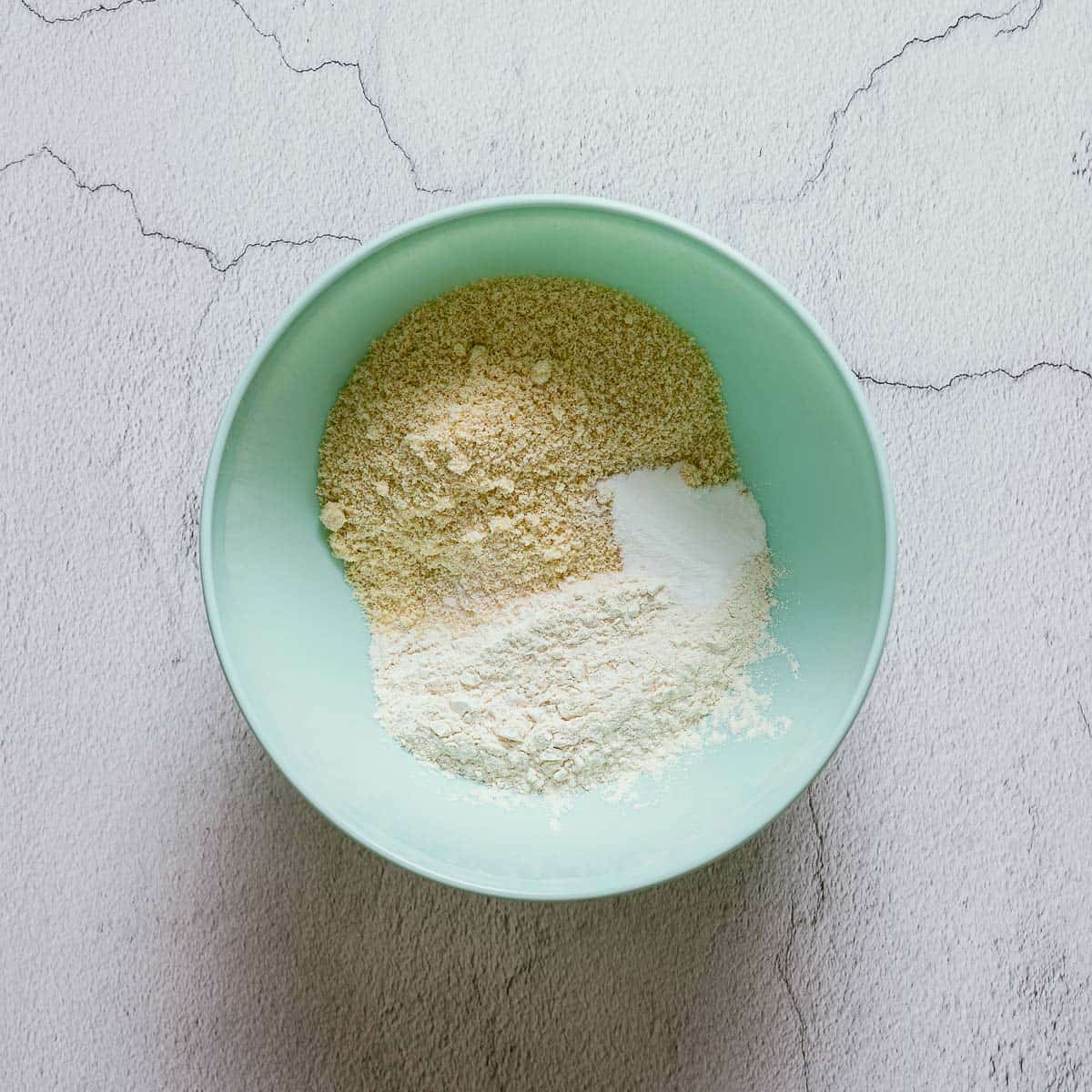
- Step 4: Combine the dry ingredients (almond flour, Flour, salt and baking powder) in a medium bowl and set aside.

- Step 5: Cream the butter and sugar until it becomes pale and creamy using a stand mixer. Turn the speed down to low and add the eggs one at a time, ensuring they are well incorporated.
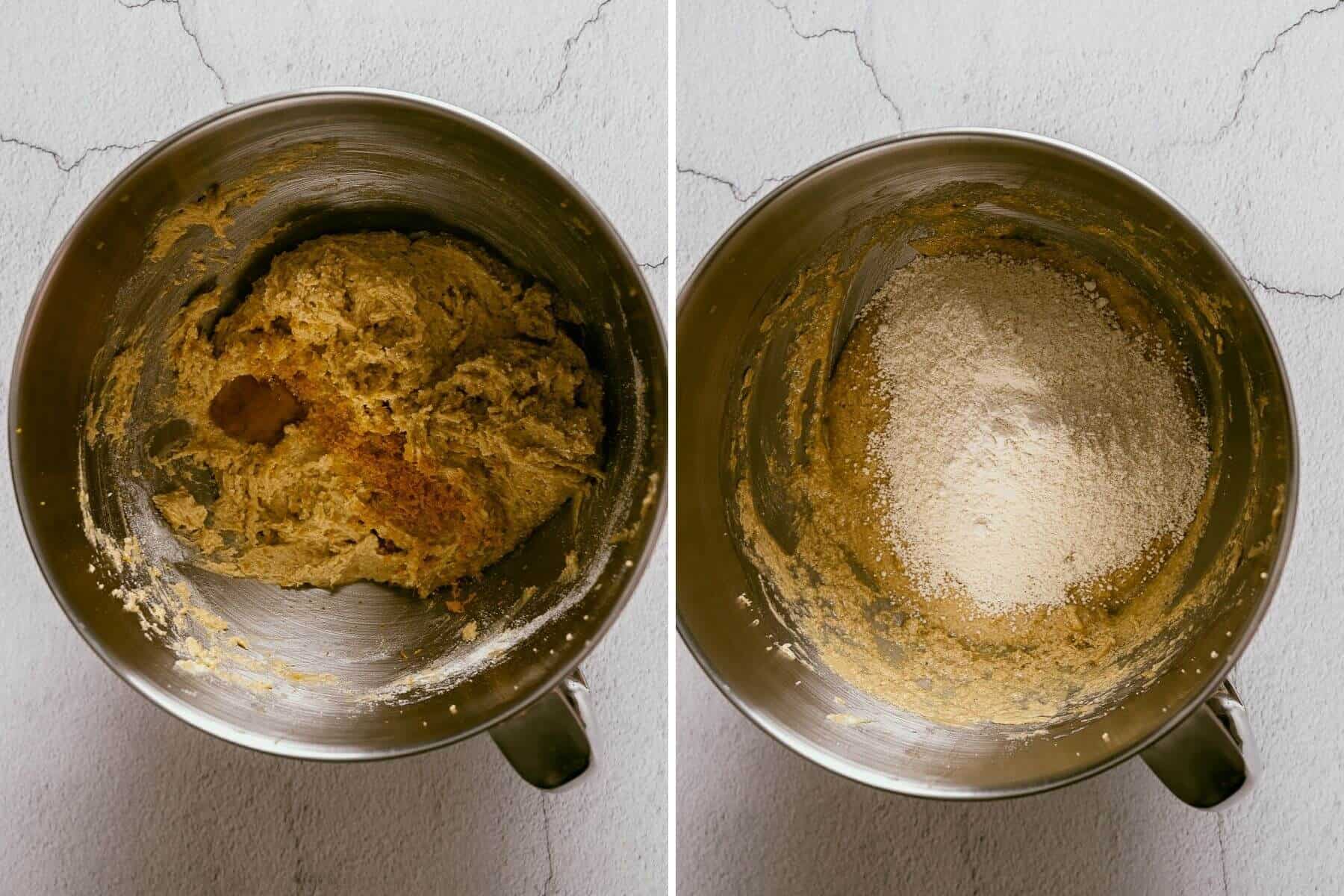
- Step 6: Add the vanilla, orange zest and blood orange juice and add the almond meal/flour mixture in two parts. Stir until just combined.

- Step 7: Line your cake tin with the cooled, cooked blood orange slices - preferably in a single layer.

- Step 8: Spoon the cake batter into the cake pan, smoothing the top with a knife or spatula. Bake for 35-40 minutes until the top has become golden brown and a skewer inserted into the centre comes out clean.

- Step 9: Let the cake cool for 10 mins, before turning it onto a wire rack to cool completely. Serve with cream and extra syrup.
Expert Tips
- Don't over mix the batter. We want the orange upside down cake to be light with a delicate crumb. Gentle folding of the batter will produce a beautiful cake. Over-mixing will cause it to be rubbery and dense.
- Keep the peels on the orange slices. I like to keep the rinds on when making this cake - I think it makes for a stunning presentation. If you find them a little bitter, just remove them and poach them for five minutes instead of ten.
- Room temperature ingredients. Make sure your butter and eggs are at room temperature before starting this recipe for the best results.
- Use a sharp knife. Or use a knife with a thin, sharp blade to slice the blood oranges.
- Be cautious with the sugar syrup. It's essential to follow safe practices when preparing sugar syrups used in baking. As the syrup cooks, the temperature increases. Don't ever leave it unattended otherwise, it will burn, and you will end up with a mess.
- Be careful of staining. This one is quite obvious. Blood orange juice stains will wash off from cooking utensils. However, be cautious with kitchen towels and clothes.
FAQ’s
Blood oranges have a more tart yet sweet flavour, apart from their unmistakable appearance. On the other hand, navel oranges tend to be a bit more bitter.
Yes, you can use navel oranges or tangerines.
Absolutely! They work well in salads, cocktails and they are fantastic in baked goods.
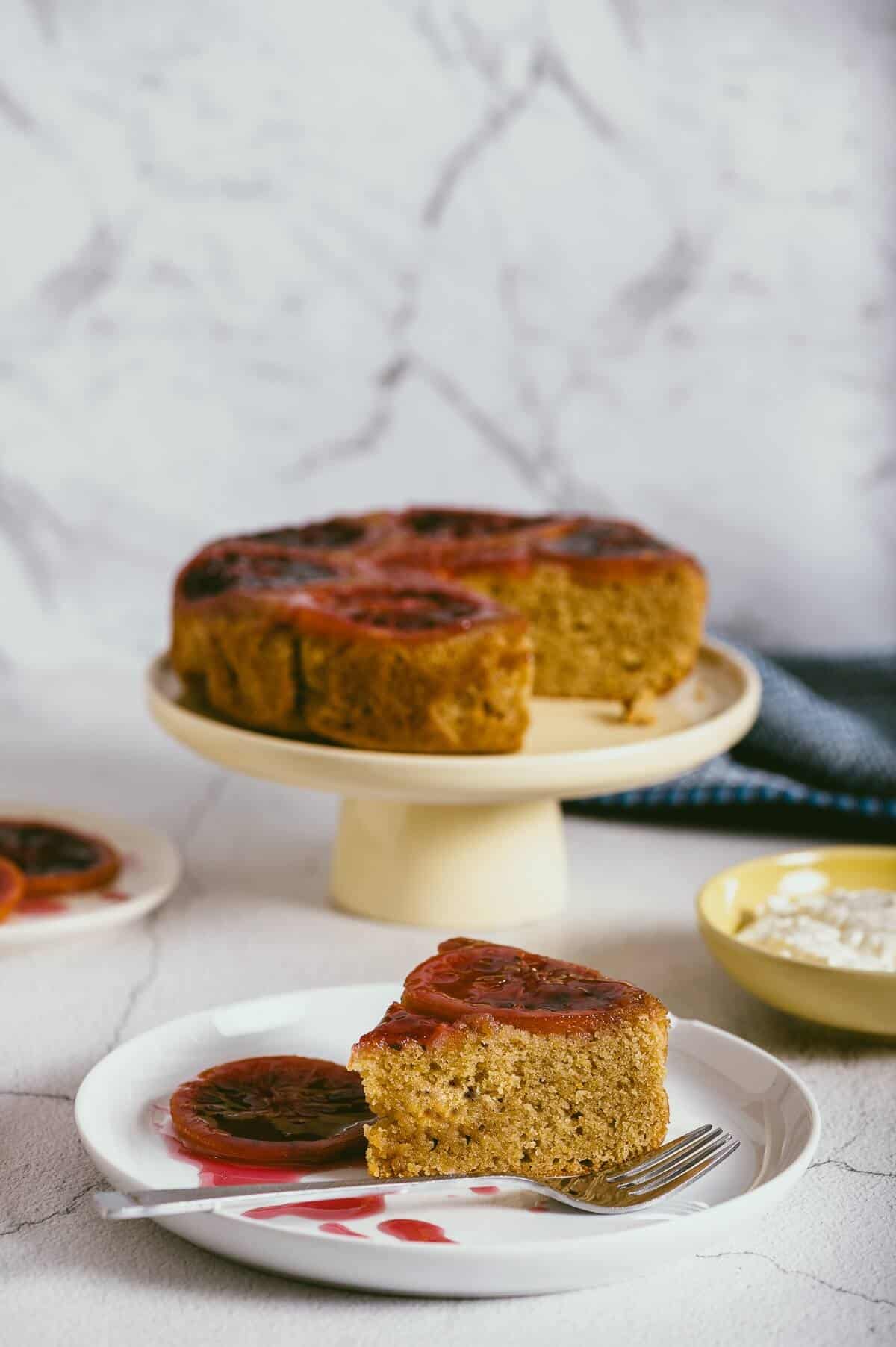
Related recipes
If you've made this recipe or any other recipe on the blog - don't forget to rate it and leave a comment below. You can also follow the blog on Facebook, Instagram and Pinterest OR sign up to the Newsletter for the latest delicious recipes.
📋 Recipe

Orange Upside Down Cake
Ingredients
For the Topping:
- 150 grams sugar, caster, (superfine) or regular
- 125 ml water
- 2 blood oranges, cut into even thin slices (see note 1 & 2)
For the Cake:
- 100 grams almond flour
- 100 grams plain flour, (all-purpose flour)
- 1 teaspoon baking powder
- 150 grams unsalted butter, (see note 3)
- 150 grams brown sugar
- 3 eggs, (see note 3)
- juice of one blood orange
- 1 teaspoon vanilla extract
Instructions
- Line your 20cm (8 inch) cake tin with parchment paper and preheat your oven to 160 deg C (320F)
For the Topping:
- Combine the water and sugar in a saucepan on low-medium heat until the sugar dissolves. Add the blood orange slices, bring the sugar syrup to a boil, and then simmer for 10 minutes. (see note 4)
- Remove the blood orange slices with a slotted spoon and set them aside to cool. Boil the sugar syrup for an extra 5 mins - until it has thickened slightly.
For the Cake:
- Combine the dry ingredients (almond flour, Flour, salt and baking powder) in a medium bowl and set aside.
- Cream the butter and sugar until it becomes pale and creamy using a stand mixer. Turn the speed down to low and add the eggs one at a time, ensuring they are well incorporated.
- Add the vanilla, orange zest and blood orange juice and add the almond meal/flour mixture in two parts. Stir until just combined. (see note 5)
- Line your cake tin with the cooled, cooked blood orange slices - preferably in a single layer.
- Spoon the cake batter into the cake pan, smoothing the top with a knife or spatula. Bake for 35-40 minutes until the top has become golden brown and a skewer inserted into the centre comes out clean.
- Let the cake cool for 10 mins, before turning it onto a wire rack to cool completely. Serve with cream and extra syrup.
Notes
- Don't over mix the batter. We want the cake to be light with a delicate crumb. Gentle folding of the batter will produce a beautiful cake. Over-mixing will cause it to be rubbery and dense.
- Keep the peels on the orange slices. I like to keep the rinds on when making this orange upside down cake. I think it makes for a stunning presentation. If you find them a little bitter, just remove them and poach them for five minutes instead of ten.
- Room temperature ingredients. Make sure your butter and eggs are at room temperature before starting this recipe for the best results.
- Use a sharp knife. Or use a knife with a thin, sharp blade to slice the blood oranges.
- Be cautious with the sugar syrup. It's essential to follow safe practices when preparing sugar syrups used in baking. As the syrup cooks, the temperature increases. Don't ever leave it unattended otherwise, it will burn, and you will end up with a mess.
- Be careful of staining. This one is quite obvious. Blood orange juice stains will wash off from cooking utensils. However, be cautious with kitchen towels and clothes.
Nutrition
This website provides approximate nutrition information for convenience and as a courtesy only. Nutrition data is gathered primarily from the USDA Food Composition Database, whenever available, or otherwise other online calculators.
© Souvlaki For the Soul
This post was originally published in August 2015, but was republished with completely new pictures and step-by-step instructions in December 2021.





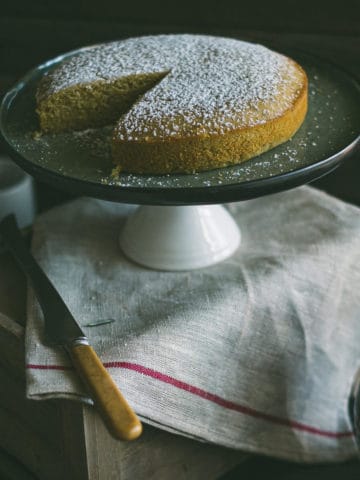
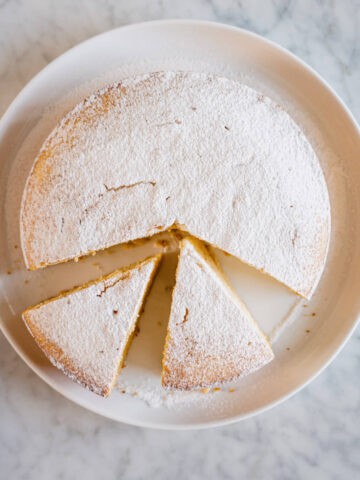



thefloshow
This is a great recipe and absolutely gorgeous photos!!
Gabriel @ The Dinner Special
Blood oranges! The bitter aftertaste is what really makes it special for me. And the colour! What could possibly make blood oranges any better? Make a cake with it! I need to try this.
June Burns
I agree, blood oranges are just so gorgeous! Love how they are showcased in this cake--and it sounds simply delicious too 🙂
Theodora | theoDORA's k d
Have never baked with blood oranges. I am somehow afraid of the result because of the bitterness but after seeing this cake I think I am convinced to give it a try. Looks amazing!
My Kitchen Stories
Oh come on Peter there is never enough cake in the world especially a blood orange one
Helen (grabyourfork)
So impressed you held off on the icing sugar for this shot. Gorgeous styling as always, Peter. You do moody so well.
Our Food Stories
this cake looks perfect!! so in love with the pictures <3
Sara (Belly Rumbles)
I look forward to blood orange season every year, it really is such a dramatic and sexy citrus.
Arun Sengupta
This was such a lovely recipe to try out and the funny part is that I am not even a good baker, I am just trying this for my wife during lockdown, and really enjoyed the process and the step by step recipe really helped me go through it :). Much appreciation from India, and thank you for posting such awesome blogs with beautiful images (drool dripping down :P).
Hope to try out more in the near future.